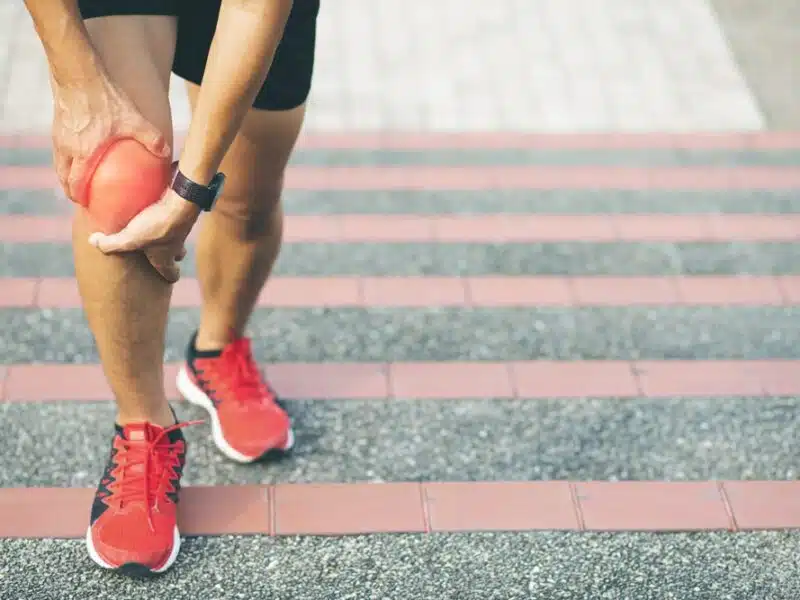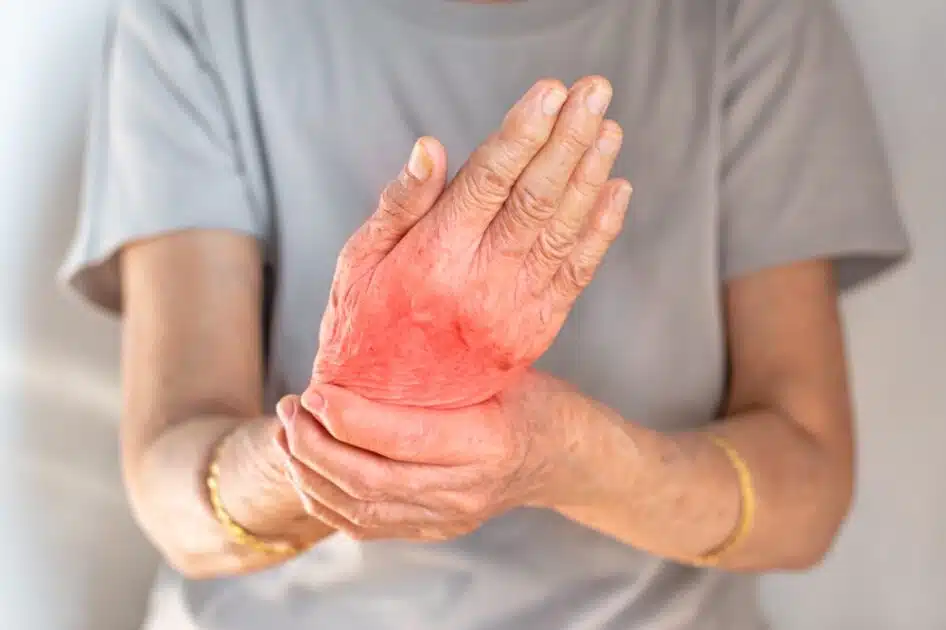Can Massage Help Arthritis

Can Massage Help Arthritis: Unleashing the Healing Touch
What is Massage 17th Jun, 2023
Living with arthritis may be a daily struggle because of the impact it can have on your quality of life through pain, stiffness, and inflammation.
What if, however, there was a healthy, drug-free method of getting relief? Enter massage therapy—the centuries-old practice of healing the psyche through the power of touch.

Can massage treat arthritis? is the topic of this essay. Prepare to learn about the advantages of this soothing, therapeutic activity that might be the final piece in your arthritis treatment jigsaw. So sit back, unwind, and let’s explore the realm of massage treatment for the alleviation of arthritis.
4 Things You Should Know About Massage Therapy and Arthritis
Living with arthritis can be difficult, but there is good news: include massage therapy in your treatment regimen might offer momentary respite without resorting to medication.
Registered Massage Therapists (RMTs) are experts who can help you feel better overall and successfully reduce arthritic symptoms. Let’s look at the four most important things you should know about massage therapy and arthritis.
1. The Benefits of Massage Therapy Based on Science
Your back is covered when it comes to massage treatment for arthritis. Studies in science have validated its advantages. Receiving massages from an RMT can, in accordance with the National Institute of Arthritis and Musculoskeletal and Skin Diseases (NIAMSD):
- Say good-bye to those nagging aches and pains and reduce arthritic pain.
- Increase joint, muscle, and tendon flexibility to prepare for fluid, elegant movement.
- Improve circulation by increasing blood flow to arthritic joints, which will relieve pain and reduce inflammation.
Massage treatment relieves muscular stiffness and offers much-needed pain relief by enhancing blood flow. You may recover an active lifestyle with improved flexibility and less discomfort, ending the cycle of soreness, stiffness, and feeling trapped.
2. Benefits that are Specific to Each Arthritis Form
Arthritis isn’t a one-size-fits-all condition, and neither is massage therapy. Different types of arthritis call for specific approaches:
- Rheumatoid Arthritis (RA): Massage therapy can significantly improve your general quality of life by promoting healthy circulation in arthritic joints, lowering swelling, and reducing pain. Massages on afflicted joints must be avoided, nevertheless, when RA flares up.
- Osteoarthritis: Massage therapy is your go-to for reducing swelling, relieving pain, improving joint mobility, and providing stress and tension relief. Embrace the opportunity for a better quality of life with osteoarthritis.
3. Communication That Works: The Secret to Success
Consult your primary care physician or rheumatologist before beginning massage treatment for your arthritis to be sure it’s safe and appropriate for your particular condition. For a positive encounter, open and honest communication with your RMT is crucial. Do the following:
Arrive early and complete the health history form. Your therapist will use this information to design a personalized treatment plan.
- Share your discomfort:
Let your RMT know about any pain you’re experiencing so they may modify their treatment plan accordingly. - Know your limitations:
Not everyone should get some forms of massage, such as deep tissue massage or treatment near arthritic joints during a flare-up. To choose the best course of action, work with your healthcare team.
4. What to Expect During Your Initial Consultation
The first time you see an RMT, you could experience both excitement and anxiety. Here is a list of things to anticipate:
- Health history and assessment:
Your RMT will review your health history, and medications, and inquire about specific pain points while gently assessing your range of motion. - Clothing Choices:
You have options! You can undress to your underwear or wear loose-fitting clothes like sweatpants and a T-shirt. - Getting started:
Lie down on a padded massage table under fresh sheets, and your therapist will knock to make sure you’re ready before beginning the treatment.
- Privacy and comfort:
The therapist will only undrape the specific body part being massaged, ensuring your privacy and comfort throughout the session. - Speak up:
If you experience any pain or discomfort during the massage, don’t hesitate to communicate with your therapist. They can adjust their techniques to ensure your comfort.
Take your time getting up from the table after the massage since you could feel dizzy. Your therapist will advise you on how to take care of yourself, such as by drinking enough of water. To keep you feeling at ease, they could also recommend doing some stretches at home.
Finally, massage treatment is a non-drug, short-term cure for arthritic pain and stiffness. You can maximize the benefits of massage therapy for managing your arthritis symptoms by understanding the science behind it, tailoring the treatment to your specific arthritis form, effectively communicating with your healthcare team and therapist, and knowing what to expect from your first appointment.
Why not give it a shot? Your body will appreciate it!
Massage Techniques for Arthritis Relief
The major symptoms of arthritis are pain, swelling, and inflammation, which can have a considerable detrimental impact on a person’s mobility and day-to-day activities.
While there are many different treatments, massage therapy may be quite effective in reducing the symptoms of arthritis. Increased blood flow, decreased joint inflammation, and pain relief are all benefits of massage.
In addition to offering tips on optimizing the advantages of massage treatment, this article discusses the many forms of massage that can aid people with arthritis.

How Can Massage Help Arthritis?
Massage therapy has been found to offer several benefits for individuals with arthritis, including:
- Reducing pain
Massage helps to relieve pain by targeting specific muscles and joints, reducing discomfort and improving overall well-being. - Increasing blood flow to the joints
Improved circulation through massage promotes healing and reduces inflammation in arthritic joints. - Increasing range of motion
By loosening muscles and improving flexibility, massage therapy enhances joint mobility and range of motion. - Improving the quality of life
Regular massage sessions can contribute to an improved quality of life by reducing pain, increasing mobility, and enhancing overall physical and mental well-being. - Boosting mood
Massage therapy can have a positive impact on mood by reducing stress, promoting relaxation, and enhancing the release of endorphins, the body’s natural mood elevators.
The usefulness of massage treatment in treating the symptoms of arthritis has been demonstrated in research studies with encouraging findings.
For instance, a small-scale study done in 2017 discovered that frequent Swedish massage helped those with knee osteoarthritis (OA) have better range of motion and less discomfort. This led to an increase in involvement in everyday activities, an improvement in quality of life, and a reduction in the need for painkillers.
Types of Massage for Arthritis Relief
Massage techniques can vary in intensity and focus, depending on individual needs. Here are some of the most common types of massage recommended for arthritis relief:
1. Swedish Massage
- Long, fluid stroking of the skin, muscles, and tissues aids in the reduction of muscular stiffness and joint pain.
- To excite the senses and relieve anxiety, therapists frequently use oil or lotion.
- Swedish massage improves joint range of motion by increasing circulation
What Is Swedish Massage? How Does Deep Tissue Compare?
2. Deep Tissue Massage
- Using targeted, firm pressure, manipulates the surface and lower layers of tissues and muscles.
- Deep tissue massage may cause discomfort, thus it is not recommended for people who have active arthritis.
3. Hot Stone Massage
- Utilizes heated stones to soothe painful muscles, alleviate muscle tension, and promote relaxation.
- Therapists must ensure that the stones are at a safe temperature to prevent burns or scalds.
- The application of heat increases blood flow and may improve joint mobility.
Hot Stone Massage
4. Myofascial Release
- Focuses on manipulating the fascia, the connective tissues around blood vessels, nerves, and muscles.
- Therapists use rolling motions to stretch and release the fascia, reducing pain and improving motion.
- Myofascial release typically does not involve the use of oils or lotions.
Exploring Myofascial Release Techniques
5. Rolfing
- Rolfing is part of a healing philosophy called structural integration.
- Therapists position the body in specific ways to massage the fascia and restore range of motion, alignment, and anatomical structures.
- This technique aims to reduce pain and improve overall body function.
How Is Rolfing Different From Massage?
6. Shiatsu
- Originating from Japan, Shiatsu is a whole-body therapy involving rhythmic pressure applied to specific points on the body.
- The goal is to restore the flow of qi, the body’s healthy energy.
- Shiatsu is typically performed with the person fully clothed, without the use of oils.
- Limited evidence exists to support the effectiveness of Shiatsu for arthritis treatment.
What is Shiatsu Massage? Chair and Foot Shiatsu Other Types and Benefits
7. Trigger Point Massage
- Focuses on treating pain that comes from trigger points, which are particular locations where muscle knots form.
- These trigger sites are subjected to pressure or vibration by therapists, which helps to loosen muscles and lessen discomfort.
8. Self-Massage
- Self-massage can be done by individuals using their hands, elbows, or knuckles.
- Self-massage tools are furthermore accessible.
- The advantages of self-massage can be increased by warming up the muscles with lengthy, powerful strokes before concentrating on specific troublesome regions.
- Smooth motions may be made during self-massage by using oils or lotions.
Maximizing Massage Therapy’s Benefits
To ensure that you make the most of massage therapy for arthritis relief, consider implementing these valuable tips into your treatment plan:
- Consult with a healthcare professional
Before embarking on your massage therapy journey, have a discussion with your family doctor or rheumatologist. They can provide valuable insights and ensure that massage therapy is safe and suitable for your specific arthritis condition. - Effective communication with your therapist
Open and honest communication with your massage therapist is vital. Take the time to discuss your health history, pain points, and preferences. Be sure to inform your therapist of any discomfort or pain during the session, enabling them to adjust their techniques accordingly and tailor the treatment to your needs. - Individualized treatment plan
Collaborate with your massage therapist to develop a personalized treatment plan that targets your specific arthritis symptoms and aligns with your goals. This tailored approach ensures that you receive the most effective and beneficial treatment. - Maintain regular sessions
Consistency is key when it comes to reaping the long-term benefits of massage therapy. Schedule regular massage sessions to experience ongoing pain relief, improved range of motion, and an overall enhanced sense of well-being. Consistent care yields consistent results. - Combine massage with other treatments
While massage therapy can be incredibly beneficial on its own, it is often most effective when used in conjunction with other arthritis management approaches. Consider combining massage therapy with medication, physical therapy exercises, lifestyle adjustments, and any other treatments recommended by your healthcare team. Integrating various strategies can provide a comprehensive and holistic approach to managing your arthritis. - Stay hydrated
Drinking plenty of water after a massage session is essential. Hydration helps flush out toxins from your body and supports the healing process. It’s a simple yet crucial step in promoting your overall well-being. - Follow self-care recommendations
Your massage therapist may provide you with specific at-home stretches or exercises to supplement the benefits of your massage sessions. Incorporating these self-care practices into your daily routine can help maintain flexibility, alleviate pain between sessions, and optimize the effects of your massage therapy.
By implementing these tips, you can maximize the benefits of massage therapy and empower yourself on the path to optimal arthritis relief. So, take charge of your well-being, embrace the healing power of touch, and discover the transformative impact that massage therapy can have on your arthritis management.
The Bottom Line
Massage treatment stands out as a gentle yet effective ally in the fight against arthritic pain and stiffness. Massage therapy has repeatedly shown its efficacy in treating a variety of conditions, including pain and inflammation, enhancing flexibility and general health. Therefore, can massage treat arthritis?
The resounding response is an assured “yes.” You can benefit from the transformative effects of this natural, drug-free approach by being aware of the science behind massage therapy, customizing the treatment to your particular arthritis form, communicating clearly with your healthcare team and therapist, and attending regular sessions.
















